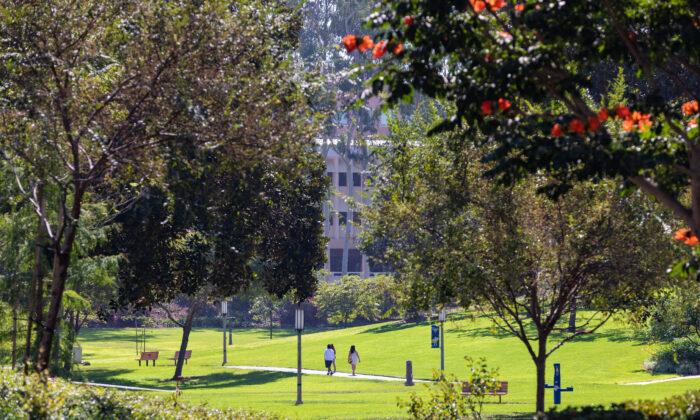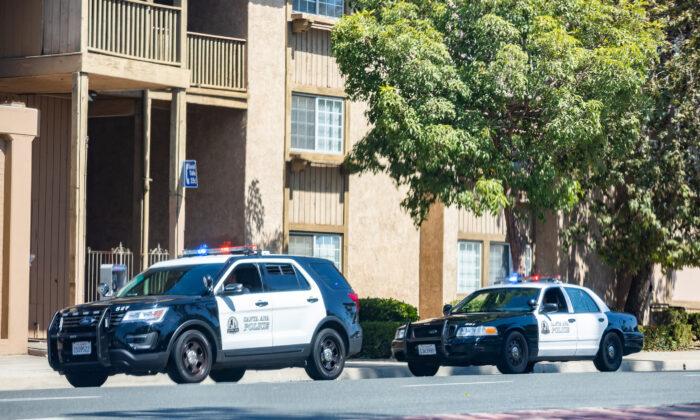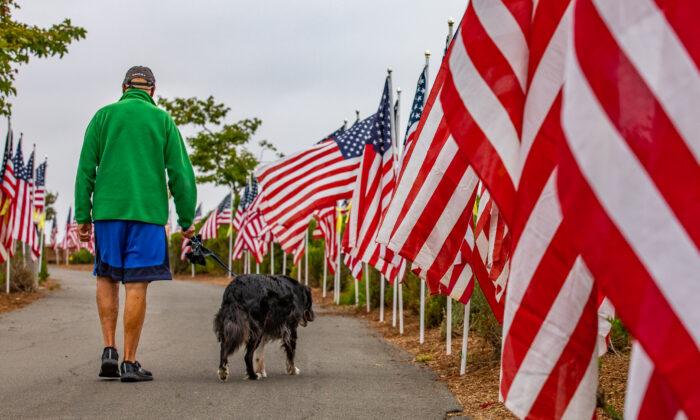Students attending the University of California–Irvine (UC Irvine) have moved into campus dormitories for the school year despite no in-person classes.
The fall quarter, which will be held entirely online, began Oct. 1.
UC Irvine will require students to undergo weekly tests for COVID-19 and sequester for seven days in small clusters before mixing with other students, a university representative told The Epoch Times.
Nearly 7,500 students are expected to live in the university’s on-campus housing during the term—about half of its 16,000 student capacity.
Tom Vasich, UC Irvine’s director of media relations, told The Epoch Times via email that there were 4,142 students living in campus dormitories prior to the wave of latest move-ins. The university’s scheduled move-in week began on Sept. 25 and concluded Sept. 29.
Vasich said the university won’t add any more students to on-campus housing after this round. Vacant units will be used for student isolation space.
Testing Students for COVID-19
The university has set up a phased approach for students currently living on campus and for those who are about to move in, to help protect against the spread of COVID-19.All students living on campus are required to be tested weekly for the disease.
The nasal tests will be administered by the university at no cost to students. The tests will take place in outdoor tents on the university’s campus.
Each student will be required to walk up to the tent, where an instructor will demonstrate how to properly use the nasal swab to obtain a proper sample. The student will then self-administer the test and place the swab inside a bag for processing.
The process takes approximately six minutes. Students will receive the results in approximately 48 hours.

New Arrivals Required to Sequester
After new students move into campus housing, they’re required to self-sequester for at least seven days.“During the student move in, the campus has created student-housing Zot Pods,” according to a statement provided by the university. “They’re clusters of six to 10 students who are allowed to quarantine together after being tested for COVID-19 upon arrival.”
The students “may eat and socialize with only each other until Oct. 6, when interactions can be expanded to other residents.”
“The small factions allow for a sense of college normalcy while limiting the spread of the coronavirus and aiding potential contact tracing,” the statement says.
University guidelines for students during sequestration include a ban on in-person gatherings of any kind, limited essential activities outside of an assigned residence, and daily symptom checks.
Students who don’t follow the guidelines will be subject to a conduct-review process. The review investigates four levels of noncompliance, depending on the severity and frequency of the offenses, according to the university.
Concerns Over Arriving Students
Orange County officials have expressed concerns with students arriving on campus, citing a recent outbreak at San Diego State University (SDSU) following the return of students to that campus.Orange County Supervisor Lisa Bartlett said she was concerned that the university could increase Orange County’s case count in the same manner that the San Diego State outbreak raised San Diego County’s case count.
“You’re getting students from other counties, other states, and other countries,” Bartlett said, adding that San Diego “barely held on to the red tier” after its influx of students.
“Even with a robust testing program, we saw firsthand what happened at San Diego State. I would hate to replicate that here in Orange County,” she said.
But Vasich told The Epoch Times that “the circumstances in Orange County today are very different than they were in San Diego six weeks ago when SDSU started school, so there is no way to make any comparisons.”
He declined to speculate on the possibility of an outbreak on the UC Irvine campus.
Dr. Matthew Zahn, medical director of the county’s communicable disease control division, said on Sept. 24 that Orange County is working closely with the university to help protect against an outbreak similar to what happened at San Diego State.
“A significant issue associated with [what happened in San Diego] was off-campus housing and transmission of the virus. We have been talking with UC Irvine and other colleges and universities not only about classroom sites and what’s appropriate, but dorm facilities and off-campus housing,” Zahn said.
“We know UC Irvine is planning to do regular testing of staff and students. ... UC Irvine and other colleges are taking measures that are appropriate with social distancing, and measures to identify people who are sick.”
Dr. Clayton Chau, the Orange County Health Care Agency director and the county health officer, approved of the university’s efforts.
“It looks like [UC Irvine] is one of the strictest UC campus, which is good for us,” Chau said. “They have a great testing protocol and contact tracing system.”
The UC Irvine fall quarter ends Dec. 18. The winter quarter is scheduled to begin Jan. 4, 2021.





